What Is Sales Workflow Automation? A Playbook for Your Team

Sales teams run on momentum. But when that momentum gets buried under data entry, sales proposals, and constant follow-ups, growth slows.
A lot of those time-consuming tasks don’t need human intervention at all. With the right digital tool, you can automatically generate updates, assign leads, and move deals through your pipeline.
That’s what sales workflow automation does. It cuts manual work, saves time, and keeps every rep aligned from first contact to close.
In this article, you’ll learn how it works and why it’s now essential for modern sales teams.
Join the thousands using Activepieces to power smarter sales for free!
What Is Sales Workflow Automation?
Sales workflow automation uses software to handle parts of the sales process that don’t need a person’s attention. It’s a form of sales process automation that cuts out time-consuming tasks, such as:
- Data entry
- Follow-ups
- Moving deals through stages
It runs on simple “if this, then that” rules. For example, when a lead fills out a form, the system automatically generates a new record, assigns it to the right rep, and sends a welcome email. These workflow automation tools keep everything consistent and reduce mistakes.
It also automates repetitive tasks across multiple apps and customer relationship management (CRM) systems. It connects sales tasks, marketing systems, and customer data so nothing slips through your systems.
While a marketing automation platform nurtures prospects, workflow automation moves them toward a deal.
Modern platforms like Activepieces make it easy to build automated workflows visually, connect systems, and measure performance.
Why Sales Automation Workflow Matters in 2025
In 2025, almost everything in B2B sales happens online. The Gartner Future of Sales 2025 report estimates that 80% of all buyer-seller interactions are through chat, email, and social platforms.
That shift demands faster response times and more accurate follow-ups, something manual work can’t deliver at scale.
According to SalesPay, many sales teams still spend 70% of their time on data entry, reporting, or scheduling. Those manual tasks take away the energy that could go into conversations with clients.
When you use sales automation technology to automate tasks, such as routing leads or updating deals, you move faster and make fewer mistakes. The tools also gather data from every interaction to tell you what drives conversions.
Fewer delays, reduced human error, and less time wasted on repetitive sales tasks all contribute to better sales efficiency and overall operational efficiency.
How Sales Workflow Automation Works
Sales workflow automation turns daily sales operations into a series of connected, automatic steps. These systems automate manual tasks, such as:
1. Capture Leads Automatically
Every sale starts with a lead, and automation makes that first step effortless. A visitor fills out a form, clicks a social ad, or chats with a bot. That single action triggers the system to record their details instantly.
Contact data moves into the CRM without waiting for someone to handle it manually. The software also cleans and enriches those records with public information, like company and role. By removing human error and delays, leads reach your team while interest is still high.
Strong lead generation depends on steady coordination between the marketing team and sales. Automation keeps both sides aligned by feeding every contact into a shared pipeline.
When a potential customer appears, sales tools automatically sort, label, and route the lead based on predefined rules. A clear sales funnel forms in real time, so you always know where to focus.
The system can trigger immediate outreach, such as a welcome email or a task for a rep to call. Follow-ups and updates continue automatically until the lead takes the next step. By the time a rep connects, the information is current and ready.
2. Qualify and Score Leads
Lead qualification filters interest from intent. Every contact that enters the system receives a score based on how closely they match your ideal buyer. The software handles lead scoring automatically, so no one has to review lists line by line.
Automation makes it easier for your sales reps to work on the right opportunities. When a score passes a set threshold, the workflow:
- Updates the CRM
- Assigns ownership
- Alerts the rep in real time
Leads that don’t qualify stay in nurture sequences until their engagement rises. Every step happens with defined rules, which removes guesswork and keeps the pipeline moving.
Over time, AI improves accuracy by comparing current performance with historical data. It learns which traits or actions usually lead to deals and adjusts the scores automatically. The process gives you a sharper view of qualified leads and better timing for outreach.
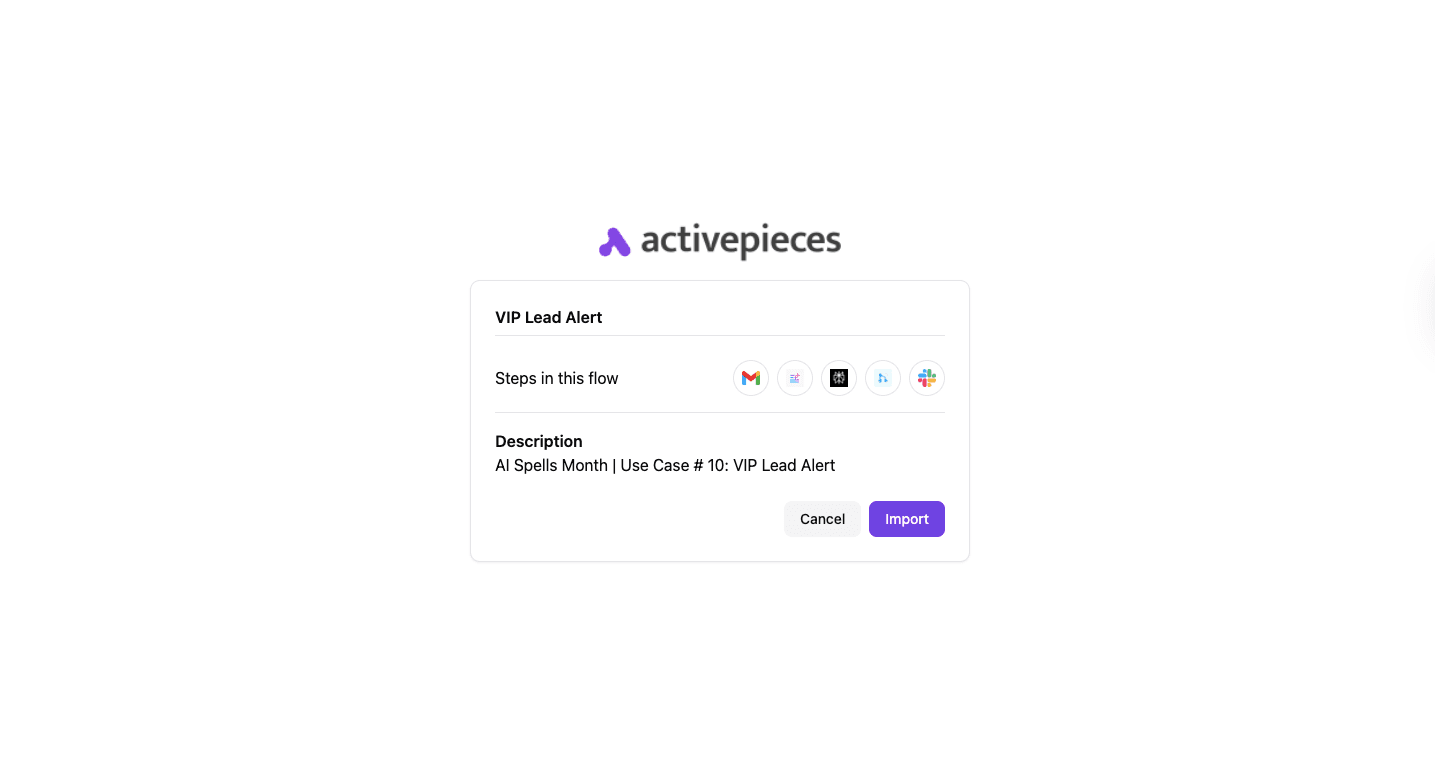
Notify your team when a high-value lead reaches out. Use the Activepieces workflow template: VIP lead alert
3. Nurture Prospects
Buyers don’t convert right away. Before reaching a decision, they explore, compare, and research first. Automation fills that waiting period with a relevant contact.
When a lead downloads content or interacts with an email, the system reacts. It might send a follow-up message, show a retargeting ad, or schedule a reminder for a rep to reach out. Each response keeps the lead engaged without constant supervision.
Nurturing works best when it feels personal. Automated systems group prospects by their interests, role, or behavior. A manager, for instance, who’s browsing pricing pages receives different content than someone reading a blog post.
That distinction keeps messages relevant and prevents fatigue. The automation adjusts timing and format based on how the person reacts, which helps maintain interest over time.
AI supports the process by studying engagement data. It monitors open rates, clicks, and replies to identify what draws attention. Those insights shape future campaigns automatically, so messages improve without manual edits.
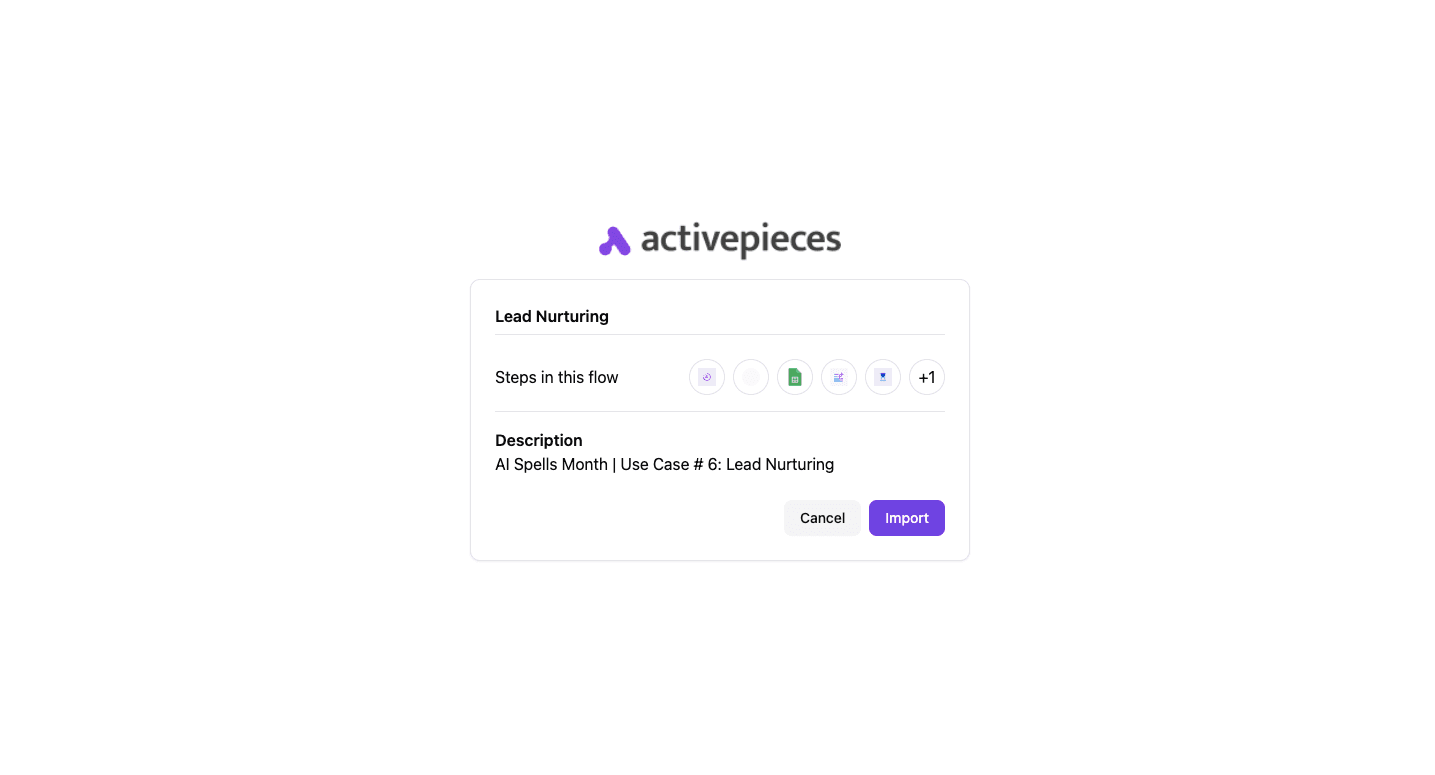
Nurture leads beyond generic reminders by sending personalized emails. Use the Activepieces workflow template: Lead nurturing
4. Update CRM and Assign Tasks
Sales run on clean customer data. Automation keeps records accurate without extra work. A new lead comes in, a status changes, or a reply lands in the inbox, and the workflow reacts right away. The system:
- Logs the touchpoint
- Updates fields
- Moves the deal to the right stage
Task routing follows the same flow. New leads go to reps by round robin, territory, or segment. High-intent actions create follow-ups with dates and owners.
Overdue items trigger alerts, so nothing goes quiet. You can add data checks that fix duplicates and bad entries before they cause trouble.
5. Close the Deal
Automation moves quotes, contracts, and reviews forward without waiting.
A rep marks a deal as ready for pricing, and the system builds a quote from approved templates and current terms. The prospect agrees, and a contract goes out for e-signature right away. Every step leaves a clear trail in the CRM.
On the other hand, discounts or custom terms often need approval. Workflows route those requests to the right manager and notify everyone when a decision lands. Once the contract is signed, the deal flips to closed won, the date records, and the value rolls into forecasts.
Finance receives the details needed to invoice, too. If a payment link fits the process, automation sends it with the contract or right after signature.
6. Post-Sale Follow-Up
Winning a deal starts a new set of steps. Automation opens the onboarding flow as soon as the record switches to customer:
- Welcome email goes out
- Access details arrive
- The new owner inside success gets tasks with dates
Set up calls to land on calendars without back-and-forth. The customer sees progress from day one.
Meanwhile, shipping or account changes trigger messages that explain what happened and what comes next. Short surveys land after key moments to collect feedback. Happy responses feed a pool for reviews and stories. Low scores create alerts so a real person can check in fast.
Why Activepieces Is the Best Sales Automation Software for Your Teams
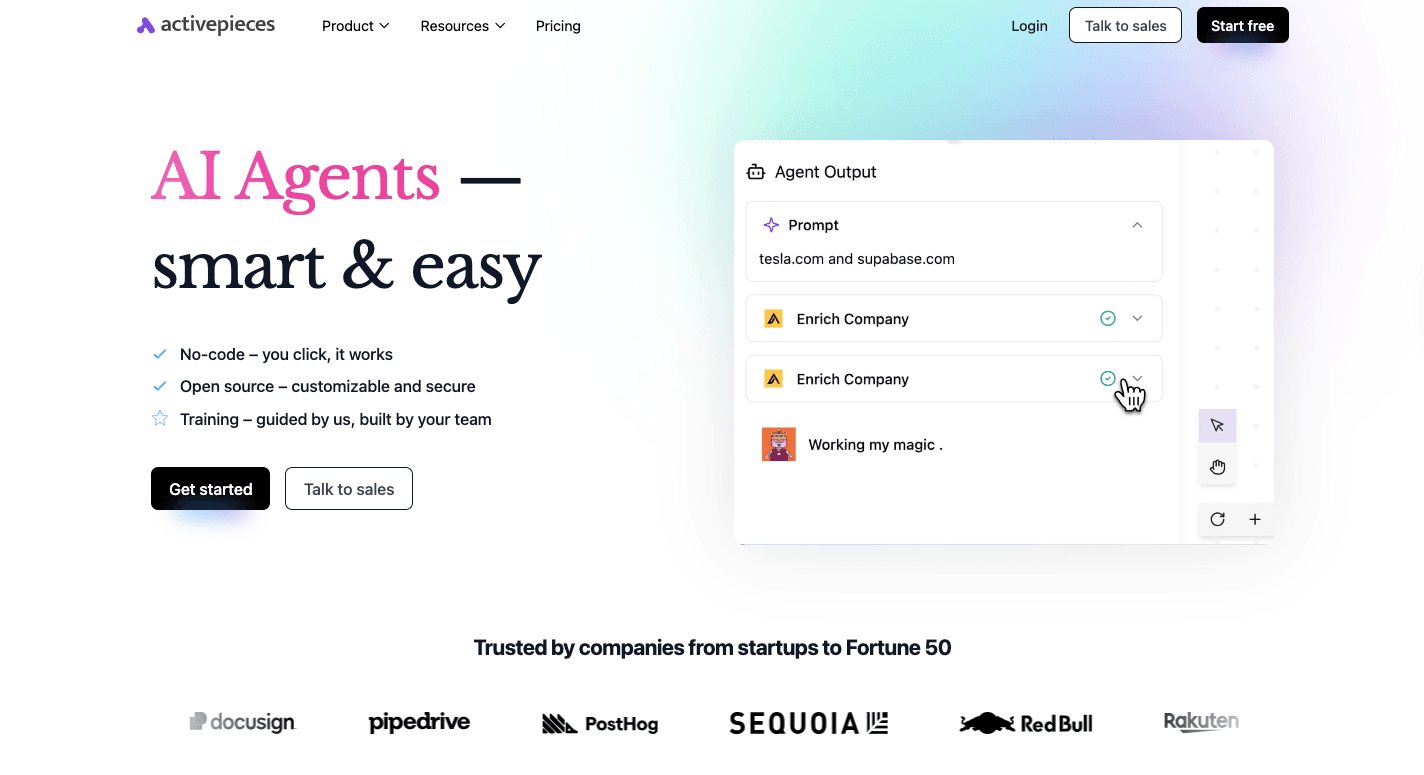
Activepieces functions as a full sales automation platform for teams that want to move faster. The system replaces manual work with connected automated processes that handle lead capture, follow-ups, and reporting across every tool your team already uses.
Since the interface is visual, you can design workflows by dragging steps rather than writing code. AI features help identify trends, generate messages, and guide users while building automations.
You can even self-host, set access controls, and choose how information moves across your network. Activepieces supports teams of any size, from startups testing their first automations to enterprises managing global sales operations.
Key Features
- AI integration – Connects directly with major AI providers and uses AI agents to create smarter workflows.
- Open-source design – Built with community input, which allows you to add or modify components easily.
- Human-in-the-loop control – Adds steps for approval or review where needed, keeping oversight intact.
- Visual builder – Creates workflows through a drag-and-drop interface.
- Strong security – Allows self-hosting for teams that need strict data control and private environments.
- Rich automation features – Covers triggers, filters, and conditional rules to handle complex logic with simple actions.
- AI Copilot – Suggests improvements and automations as you build.
- Customization options – Supports company branding and permissions to match internal policies.
- Hot reload development – Lets developers test and deploy new workflows immediately without downtime.
Integrations
Connections drive every automation, and Activepieces currently delivers 439 pre-built integrations, known as pieces. The platform links with CRM systems, analytics dashboards, and communication channels to keep data flowing in real time.
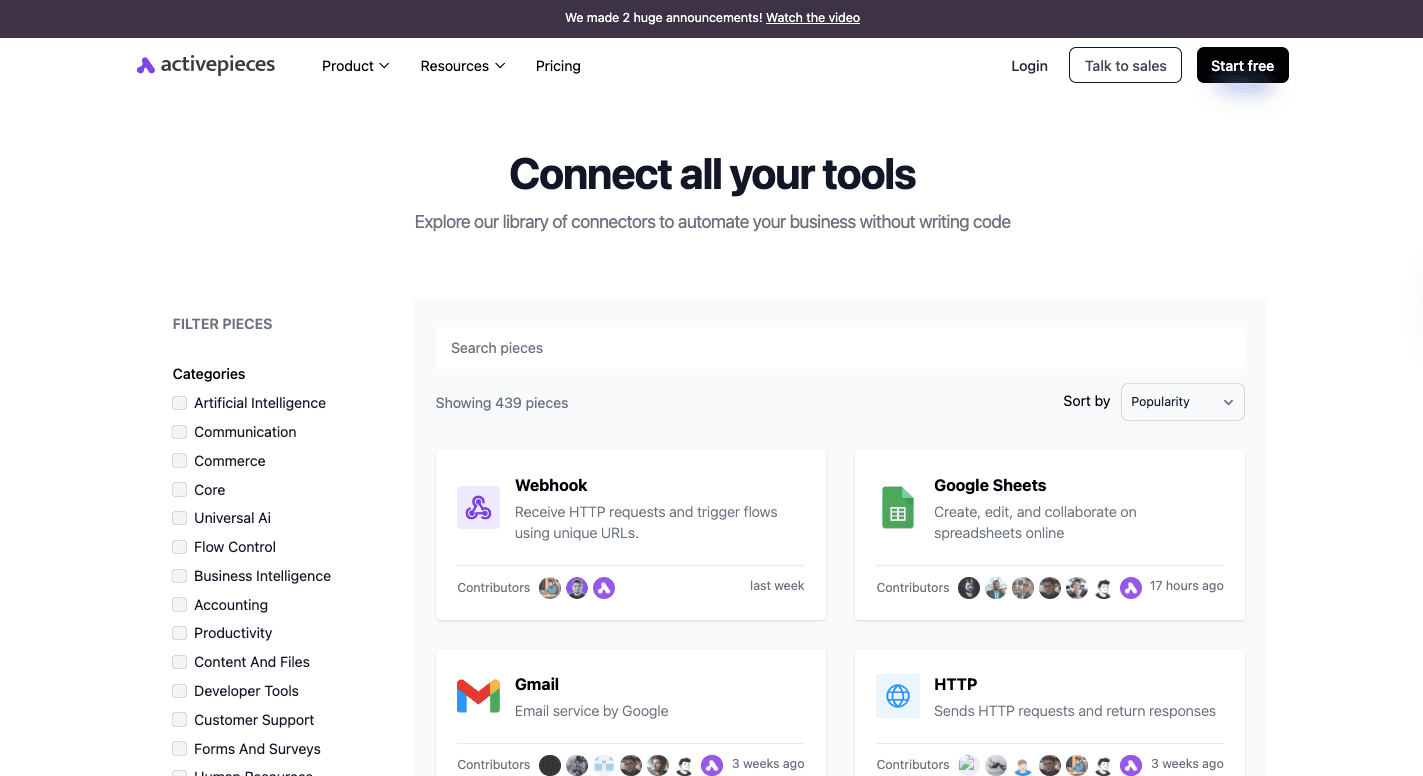
It integrates smoothly with:
Each integration connects without a complex setup. Data syncs instantly, tasks trigger automatically, and every record stays current. The mix of open-source development and community contributions keeps the library growing.
Use Cases
Teams use Activepieces to connect tools, automate communication, and improve visibility across departments. It adapts easily to any process that repeats or needs coordination between multiple platforms.
Common workflow automation examples include:
- Lead management where new contacts are captured, enriched, and routed automatically.
- Deal tracking that updates opportunities and sends notifications at every stage.
- Customer outreach through personalized emails triggered by activity or status changes.
- Reporting automations that collect and update metrics in shared dashboards.
- Marketing coordination linking social posts, campaign updates, and CRM activity in one flow.
Each case saves time and reduces missed steps. Workflows run consistently, so you can focus on strategy and relationship building. The system becomes a silent partner that keeps everything aligned and updated without constant monitoring.
Pricing
The Community Edition is completely free and runs on your own server. Teams that prefer hosting control can use it without any task limits or external costs.
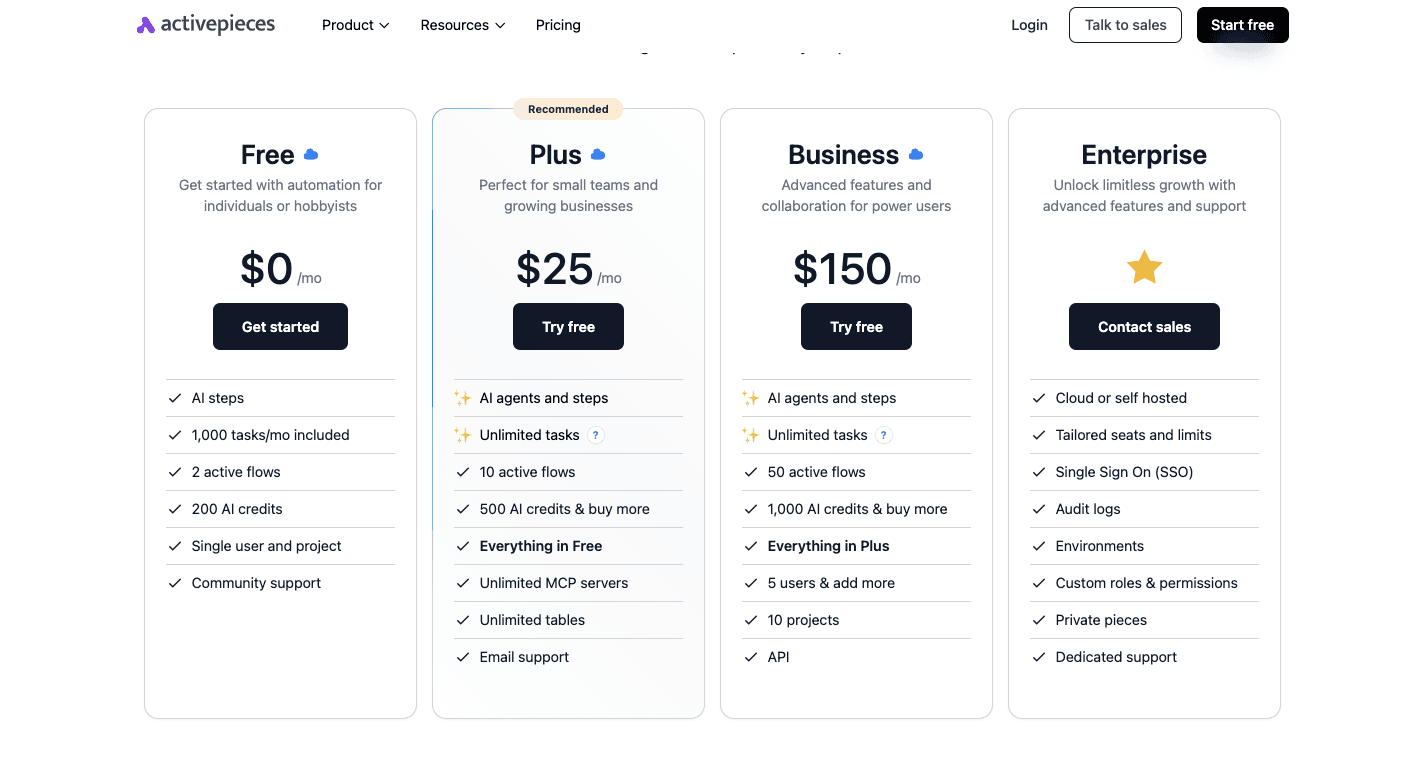
Then, the Free Cloud plan offers 1,000 tasks each month, two active flows, and access to AI features. Small teams often start with the Plus Plan at $25 per month, while larger operations usually move to the Business Plan, priced at $150 per month.
Enterprises can design a custom plan that adds dedicated support, expanded capacity, and branded environments. Costs stay predictable because pricing isn’t tied to task volume. Every option keeps automation within reach for teams at any level of growth.
Need a custom setup? Talk to our sales team and make it happen!
Common Sales Workflows You Can Automate
Automation supports every stage of selling. From capturing leads to tracking results, there’s a workflow for nearly every task. These workflow automation examples show how teams can save time and stay consistent without losing control.
Lead Management Workflows
Leads often arrive from several places at once. A contact form, chat, or ad click can start an automated flow that collects details, enriches them with extra information, and passes them to the right rep. That step removes lag and keeps the data fresh.
Scoring follows soon after capture. Each interaction adds points:
- Downloads
- Pricing views
- Event signups
When a score passes a set mark, the workflow assigns it for action. Leads that need more time stay in nurture tracks until they show a stronger interest.
Deal and Sales Pipeline Management
Deals move faster when updates happen on their own. Every change in stage can start a specific action. When a proposal goes out, the system builds a reminder for a check-in. If a deal sits too long, a task appears for review.
The system also protects data quality. It flags missing close dates, updates forecasts, and clears stale records. You read accurate reports because every change syncs live.
Follow-Up Sequences
Momentum matters after the first contact. A structured series of follow-ups keeps deals alive and steady. The process starts simply:
- A thank-you note after the first call.
- A check-in two days later.
- A value message soon after.
Timing stays consistent without manual scheduling.
Each workflow adapts to how the prospect reacts. If they open an email or view a resource, another message appears with related content. Missed replies trigger reminders or fresh offers. Well-written follow-up emails shorten the gap between touches and keep interest warm.
Customer Retention and Upsell
Status updates keep people informed. If shipping, billing, or setup changes occur, the platform sends clear messages that explain what happened and what to expect next.
Short Customer Satisfaction Score (CSAT) or Net Promoter Score (NPS) surveys land after key moments so you can improve the customer experience. Positive scores feed testimonials, while low scores start a fast human follow-up.
Automation further routes tickets, logs outcomes, and shares context with customer service teams so handoffs stay smooth. If an account goes quiet, a re-engagement flow sends fresh content or a short invite to talk.
Every touch writes back to the CRM, so sales, success, and support work from the same facts.
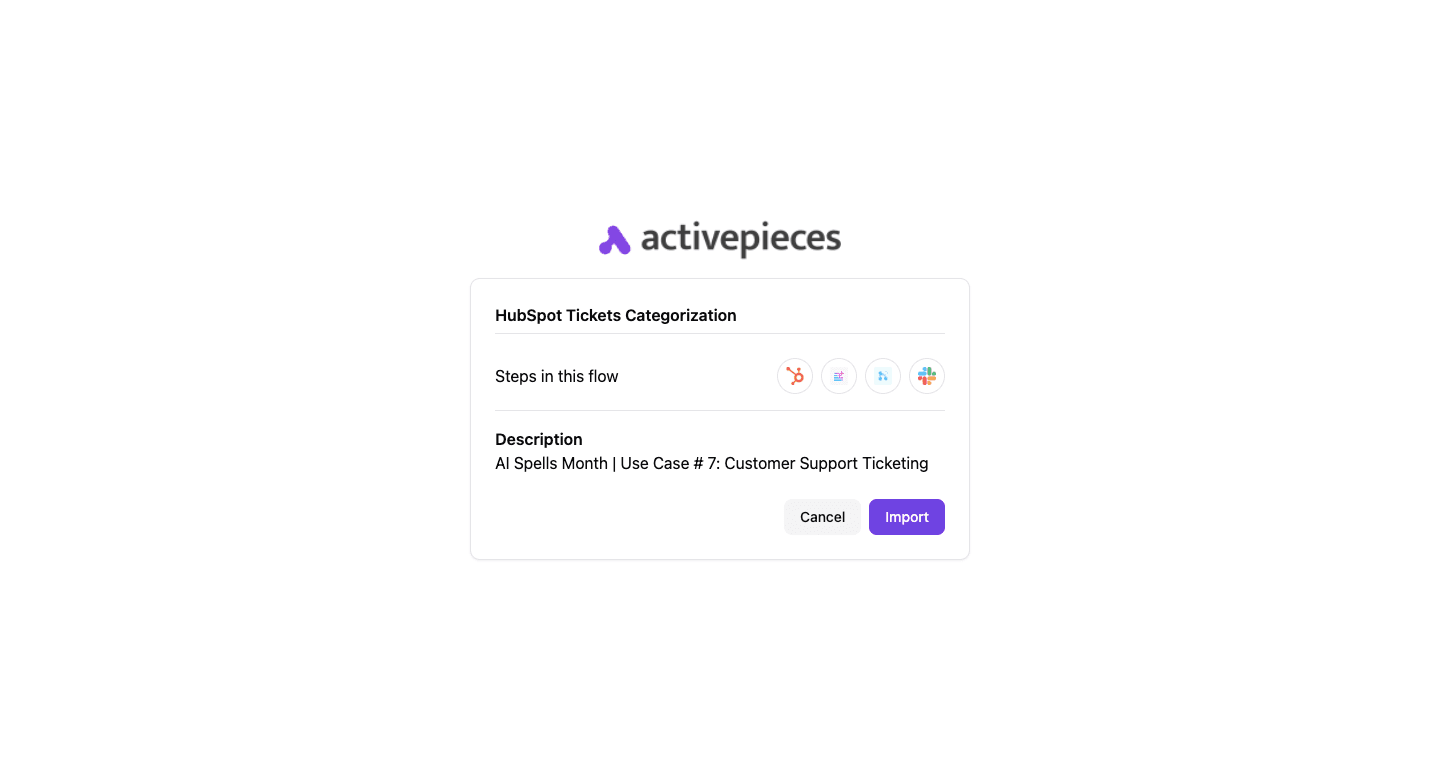
Categorize and route HubSpot tickets automatically. Use the Activepieces workflow template: Customer support ticketing
Accelerate Every Step of Your Sales Workflow With Activepieces
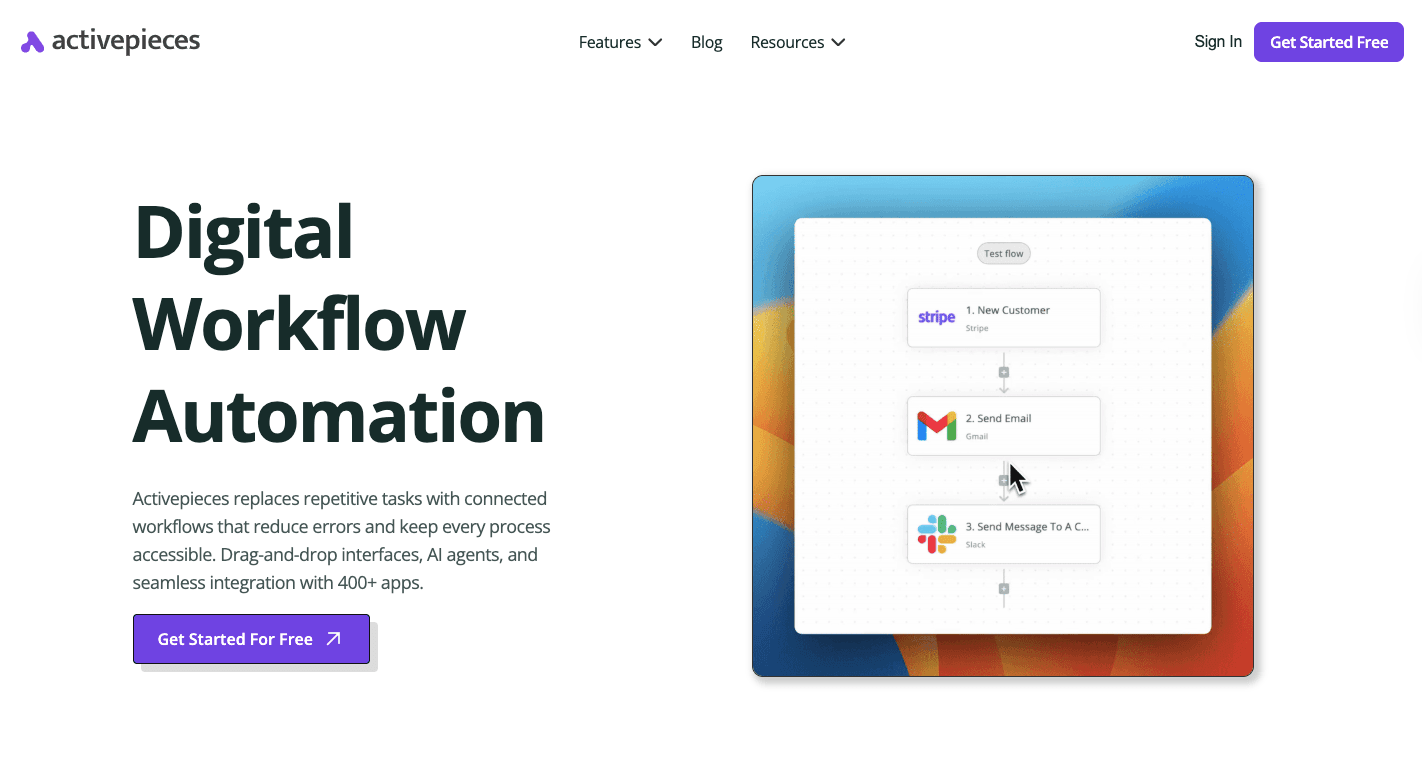
Activepieces is a sales automation tool that turns complex sales routines into connected, automated flows that anyone can manage. Each automation replaces steps that usually take minutes or hours with a single trigger that runs in just a few clicks.
Your sales teams can create intelligent workflows that handle lead capture, follow-ups, deal tracking, and reporting without ever touching a spreadsheet. Tasks that once required multiple tools now happen in one place.
That means no context-switching, no data gaps, and no waiting for updates to sync.
Every automation helps sales professionals keep their pipelines active and their outreach consistent. You can build a sequence that sends a personalized email when a lead completes a form, updates the CRM automatically, and alerts the assigned rep immediately.
With each step running smoothly, teams respond faster and build stronger relationships.
Activepieces helps streamline processes at every level. It links marketing, sales, and support systems to keep data moving freely across departments.
Connect your tools and start automating in under five minutes with Activepieces!
FAQs About Sales Workflow Automation
How is sales workflow automation different from business process automation?
Sales workflow automation focuses on streamlining administrative tasks, lead management, and deal tracking using CRM software and AI-driven triggers specific to sales operations.
Business process automation covers broader areas like HR, finance, and enterprise resource planning, handling workflows across departments. In short, sales automation improves selling activities, while business automation manages company-wide processes.
Can automated workflows improve customer interactions and sales productivity?
Yes. Automated workflows create faster responses, personalized follow-ups, and smoother customer onboarding, which leads to better customer interactions. Sales teams also handle fewer repetitive tasks, freeing time for relationship-building and strategy.
Overall, sales productivity increases because automation removes mundane tasks that slow reps down.
What are some real-world examples of sales automation in action?
Companies use automation for email automation tools that send follow-ups, document management for contracts, and automated routing that assigns leads to the right rep.
Others use integrations for payment processing to instantly process payments after a deal closes. These automations cut manual effort and keep every record updated in real time.
Does sales workflow automation help with sales forecasting and pipeline accuracy?
Yes. Automated systems collect and analyze historical data from every stage of the funnel, producing more accurate forecasts and cleaner pipelines.
Sales managers can see trends, spot risks early, and plan resources effectively, which leads to better results and higher confidence in revenue projections.


